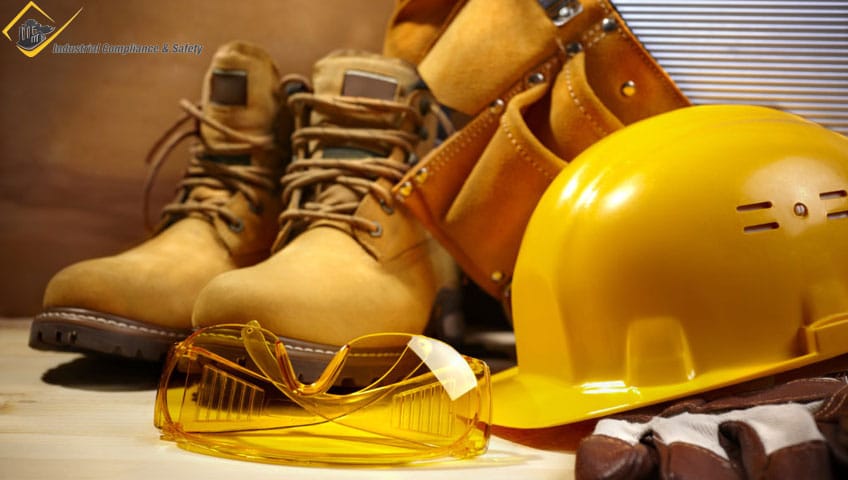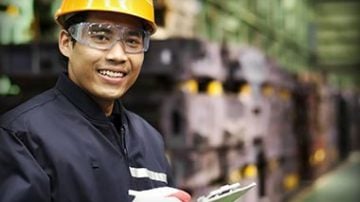Put Jobsite Safety Front and Center
Safety is a top priority at any job, but it is especially important in industrial industries like construction. Construction work poses many hazards and health risks for those operating within it. From tools and equipment used to the unpredictable environments they work in, construction teams and their employers must be diligent with their safety measures and protocols. Here are ten things to consider when working towards a safer construction worksite.
1. Provide Frequent Qualified Training
Safety on the jobsite starts with detailed training and knowledgeable guidance. Construction workers should have thorough training not only for their specific job duties but also training for several safety measures. Employees should have adequate training for every phase of the construction project. First aid and emergency training is also a vital element for construction workers, they need to be ready to provide immediate aid to themselves or their team members.
Jobsite and safety training for employees is easier than ever with advancements in technology. The ability to access training modules online not only allows greater access for more employees but also amplifies the variety of safety training courses available. Learn more about how advancements in technology are making the construction industry safer to work in.
2. Ensure All Workers Wear Proper PPE
Having your whole team trained is just the first step. Construction employers need to ensure all jobsite crews are wearing appropriate personal protective equipment (PPE). Each project will require different types of PPE depending on the tasks to perform, equipment used, location of project and potential hazards involved. Some of the most common personal protective equipment includes: helmet, gloves, safety glasses, ear muffs or plugs, boots, and high visibility vests and suits. Employee clothing should also be considered in addition to PPE. Long pants, long sleeves and steel toed boots can help lessen the severity of some potential jobsite injuries.
3. Provide Clear Instructions to All Jobsite Workers
Site inductions should be present on every jobsite. Whether your construction crew is a team of experienced or new workers, a site induction helps the entire team familiarize themselves with specific operations on the jobsite. Supervisors can hold an informal chat each morning and each shift change to relay any changes and conduct a review of health and safety protocols.
4. Prevent Jobsite Crowding
Crowding and clutter can create confusion in any environment. This is especially true for construction worksites. Construction zones tend to be filled with alot of large machinery, industrial equipment and several workers. If your jobsite is overcrowded your team is at a higher risk of confusion and mixed signals resulting in personal injury or property damage. The best and safest strategy is to limit the number of workers in busy areas. Utilize a spotter on the ground who can watch for potential hazards and reduce the chances of accidents.
5. Fall Safety Protection Systems & Fall Hazard Awareness
Construction site falls are responsible for a large number of injuries and deaths. Employers should provide fall safety training as well as fall safety protection systems. Fall risks should be taken seriously and every precaution should be taken to avoid them. Cultivating a strong safety culture in your company is an important factor in fall risk prevention as well. Safety culture helps all employees think about safety first for themselves and their peers.
6. Always Use the Right Tool for the Job
Provide your construction crews with the tools they need to complete their job safely and efficiently. Construction workers should never have to improvise with what they have to complete their designated task. In short, shovels are not meant to be used as hammers and drills are not meant to be substitutes for cutting through a piece of plywood. In addition to providing the proper tools, ensure your employees also have the proper equipment training. Teach them not to alter machinery, remove machine guards, or take down scaffold ties or guard rails just to get a job done.
7. Keep a Tidy Construction Jobsite
Encouraging a tidy jobsite can also help limit hazards and prevent potential accidents. It is fairly easy for construction sites to become disorganized and messy, just from the nature of the work. Try to keep a clear path that can be used in the case of an emergency, you should have an easy way in and an easy way out. Equipment and supplies should be kept in organized areas to prevent trips, slips and other falls.
8. Be Cautious When Lifting
Almost all workers on a construction site end up doing some fairly heavy lifting throughout the day. There is a proper way to lift these heavy items to limit strains, sprains and other personal injuries. It is important to discuss specific lifting techniques with your teams including: bending at the knee instead of with your back and minimize twisting of the body while moving heavy items.
9. Be Aware of Your Surroundings
Electrical wires, trenches and other trip hazards are just a few of the many items to be aware of in your jobsite surroundings. Remind your construction crews to be mindful of these items and to alert their supervisor right away if they see anything out of order that puts them at risk. It is also important to keep an eye on the weather. Any type of unanticipated weather change can alter how you complete necessary tasks. Severe rain, severe heat and high winds can all put your team and your equipment at risk. Know when to alter your plans or call it a day and adjust your schedule.
10. Report Accidents and Hazards Right Away
Construction workers should report accidents to their supervisor immediately. A delayed response after an accident can complicate injuries and make circumstances more difficult to investigate. Encourage and reward your employees for reporting suspected workplace hazards or any near-misses. Management should work quickly to find solutions and safer protocols to mitigate those risks.
As dedicated safety compliance consultants, Industrial Compliance & Safety works with you and your company to create and maintain safety programs and training. We help you make each jobsite the safest it can be while helping your business remain within construction safety regulations. Learn more about how Industrial Compliance & Safety can help you and your team create a safer workplace.
Ready To Get Compliant Today?
Call us or complete the form below!





